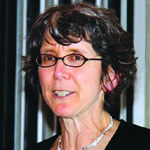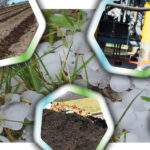
Nora Goldstein
BioCycle September 2014
At the end of October, organics recyclers from across the technology, project and policy spectrum will convene at the Turf Valley Resort in Ellicott City, Maryland for BioCycle East Coast Conference 2014. One subject likely to come up in many sessions, as well as in the Exhibit Hall and during networking breaks, is the capacity crunch to process organic waste streams in the Northeast and Mid-Atlantic regions. For years, federal, state and local agencies, along with organics recycling technology and service providers, have been priming the pump for diversion of source separated organics. Many generators of food waste — from large supermarket chains to small restaurants, from large universities and hospitals to K-12 schools — are actively source separating food waste and other compostable materials and diverting them to composting and anaerobic digestion.
More recently, several Northeast states, as well as New York City, adopted bans on disposal of commercial organics. Perhaps the highest profile ban is in Massachusetts, set to take effect on October 1, and covering any generator producing one ton or more/week of commercial organic wastes. Existing capacity in Massachusetts to manage those organics is comprised of several large composting facilities, numerous small farm composting operations and two farm-based anaerobic digesters.
Further south, one of the largest source separated organics composting facilities on the East Coast, located in Delaware, is up for renewal of its operating permit. Opposition from facility neighbors due to odor impacts will be factored into the Delaware Department of Natural Resources and Environmental Control’s decision about renewing the permit. Nearby, existing source separated organics processing capacity available in Maryland and Pennsylvania is comprised primarily of smaller scale composting facilities and farm-based digesters (the latter mostly in Pennsylvania).
So what is the path forward to build sustainable, permanent organics processing capacity? First and foremost is to not build capacity in a “waste management vacuum.” To ensure longevity of organics diversion, programs and facilities need to be integrated into the larger sustainability fabric of the region they are serving. A case in point is the Chesapeake Bay, the largest estuary in the U.S. For years, the Bay has suffered from excess nutrient enrichment that has led to large algae blooms and the resulting dead zones they create. Sources of the excess nutrients include agricultural runoff, urban and suburban storm water, wastewater treatment and industrial facilities. As is evident in many sessions at BioCycle East Coast Conference 2014, the ecosystem services provided by organics recycling — from treating nutrient-rich waste streams via composting and anaerobic digestion to utilizing the compost and digested outputs — are vast, and underutilized. On the AD side, conditioned and compressed biogas can be used as vehicle fuel, providing GHG reductions and improving air quality.
Job creation and economic development resulting from more organics recycling facilities (including utilization of the high-value products) are also overlooked and under valued. Job creation potential of composting and compost use was documented in a report released in 2013 by the Institute for Local Self-Reliance and discussed in BioCycle’s article, “State of Composting in the U.S.”
In short, there is definitely a capacity crunch in the Northeast and Mid-Atlantic regions. With the pump primed to divert organics and supportive public policies in place, what is missing is the vision to see how vital organics recycling is to meeting not just waste management needs, but helping to resolve the larger environmental (e.g., climate, water quality, etc.) crunch that is ubiquitous to us all.









